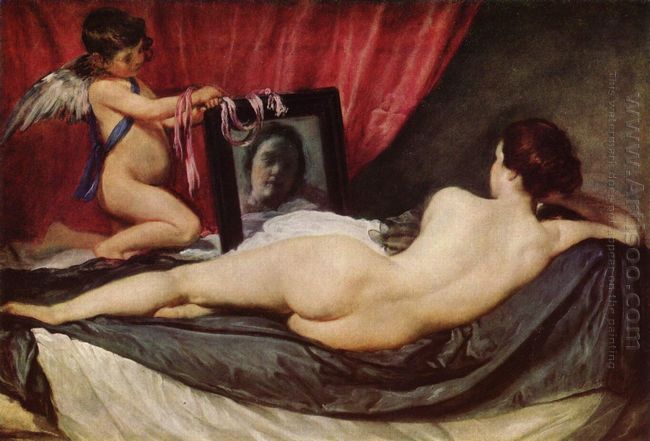In the summer of 1651, Diego Velazquez returned to Spain from Italy and the king promoted him to the Director of Royal Art, which made him fall into the complex art affairs. The painter felt very depressed because he was unable to paint. At the same
Sleeping Venus. But this twisted and elegant curve beauty, the youth surging that was back to the audience with the life desire and the secular and ideal beauty performance were imaginative, which also Venice school lacked. This painting showed the awakening of the Spanish artist’s humanistic spirit in the 17th century and also marked the unique display of Spanish humanistic spirit in the painting.
The painting depicted Venus laid in front of the mirror and the little cupid held the mirror for her. Venus was turning her back to the audience. The implicit composition was obviously influenced by the Spanish religious asceticism. Venus was the goddess that many painters loved to depict. The painters tended to borrow the goddess to express their social and aesthetic ideals. Different nationalities and different painters showed the different Venus. This Venus depicted by Velasquez was dainty, cute, dignified and noble. Her incomparable beauty showed the aesthetic concepts of Spanish people. The painter used the rhythmic flow line to form the female body beauty. If the body of Venus was carefully seen, her changes of curves fluctuation were like the melody music with strong and sonorous in the upper and peaceful and soothing in the lower. The master always used the transparent and concise colors and precise brushworks to depict the complex skin changes and delicate body full of vitality and youthful spirit. This was the artist’s praise for the human aesthetic beauty.
